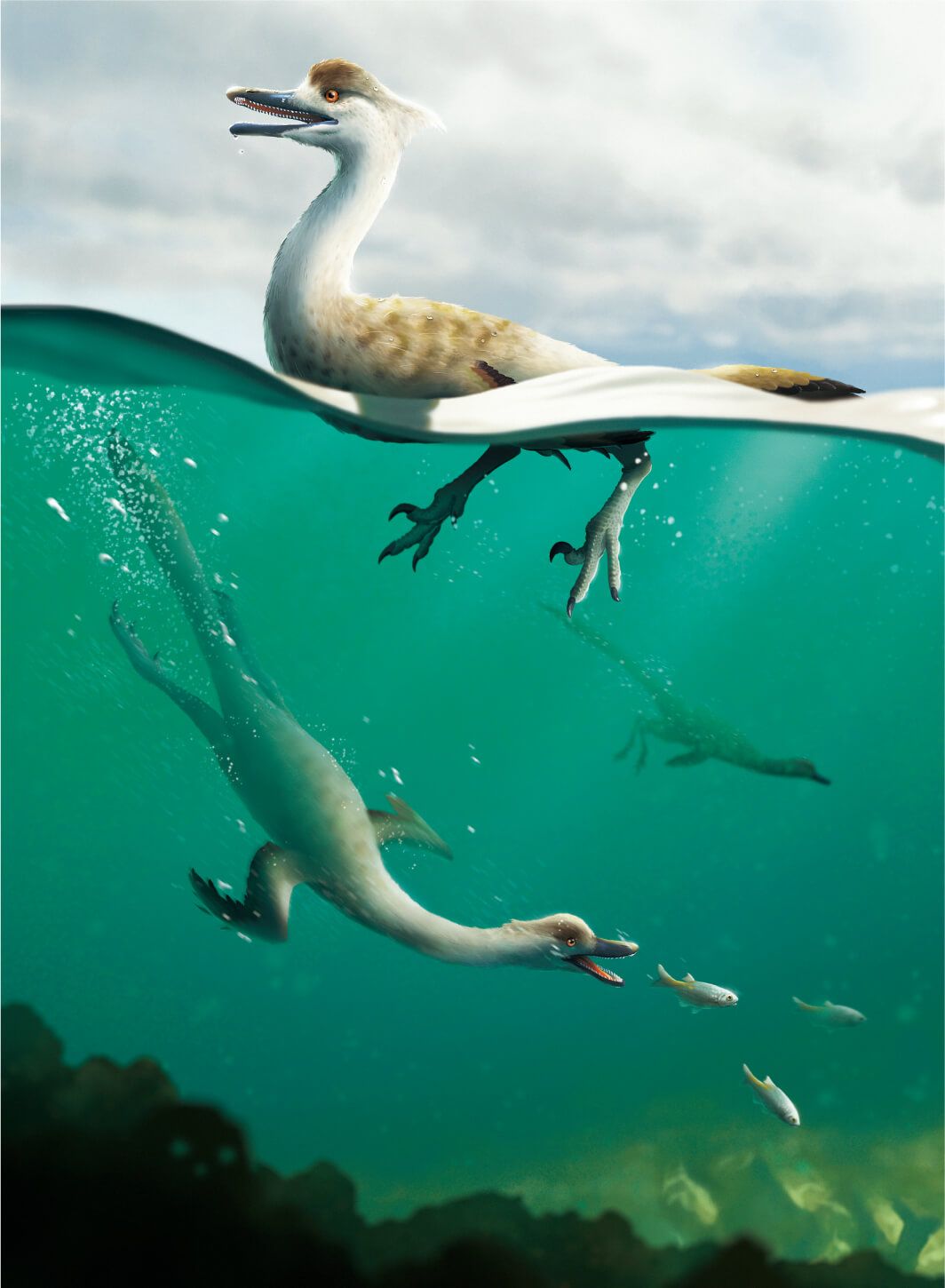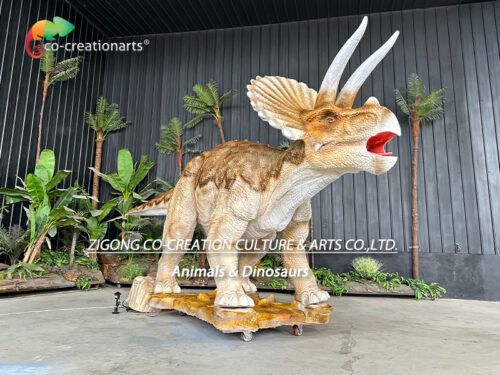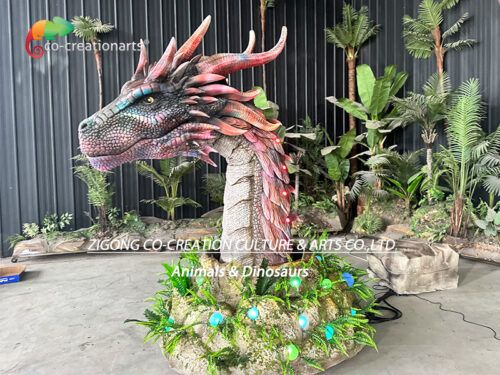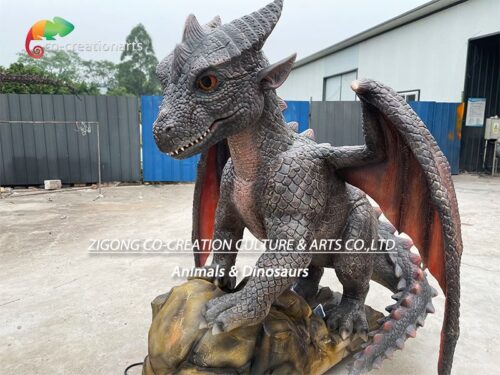Science and Technology Daily reporter Zhang Mengran
An archaeological study published Tuesday in the journal Letters Biology describes a new species of dinosaur with a streamlined body shape similar to that of modern diving birds such as penguins and puffins. The discovery shows the first non-avian theropod dinosaur (that is, carnivorous dinosaurs that walked on two feet) with a streamlined body.
The Seoul National University team examined a sample of fossil remains to identify the new species, which has been named Natovenator polydontus, meaning ‘swimming hunter with many teeth’. The sample is a mostly intact skeleton consisting of a skull, spine, and the remains of one forelimb and two hind limbs.

Reconstruction of a diving dinosaur. Photo: Communications Biology
The team reports several adaptations that suggest the “swimming hunter” dinosaurs may have been a semi-aquatic diving predator, including a streamlined body similar to that of modern diving birds (with ribs pointing toward the tail) and a long neck similar to that of modern water birds such as geese. These adaptations may have reduced the resistance the swimhunter encountered in the water, helping it to catch its prey.
The researchers also theorize that the swimhunter had an unusually large number of teeth for its jaw size, perhaps indicating a diet based on fish or insects, but further evidence (such as fossilized remains of stomach contents) is needed to confirm this. Analysis of the evolutionary relationship between the new species and other theropod dinosaurs suggests that it is related to Hazcaraptor, a class of non-bird theropod dinosaurs, which previous research suggested may have adapted to a semi-aquatic lifestyle, similar to today’s waterfowl.
Together, these findings suggest that the “swimming hunter” dragon was a semi-aquatic diving predator, providing more insight into the evolution of theropods.






